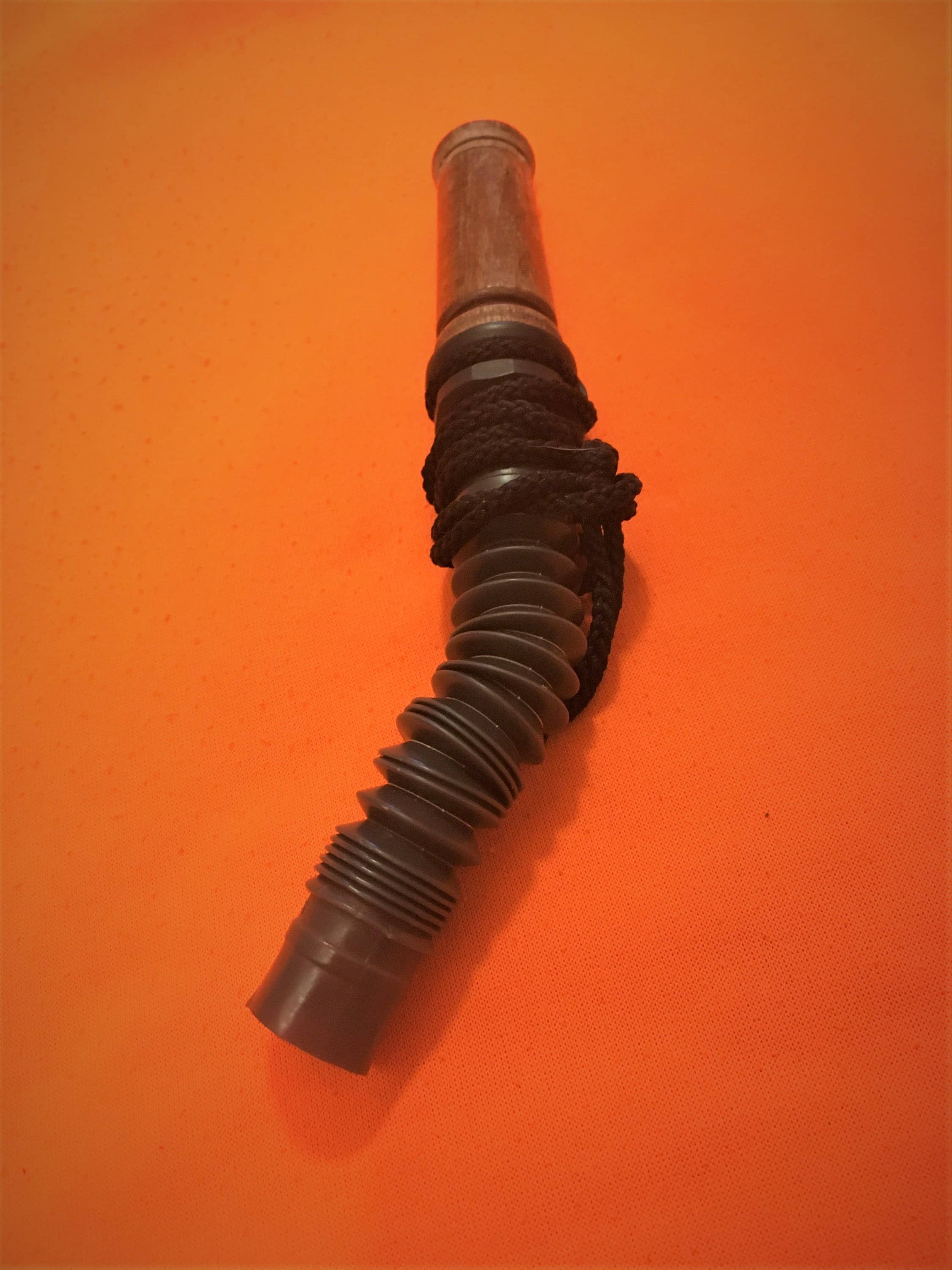
The Sound of Orange. Grunt calls can get amazing reactions out of deer, especially during November’s firearms hunting season. Master this tool and influence buck behavior on any Hunt. Simonson Photo.
By Nick Simonson
The sound of a grunting buck can send a shiver of anticipation up any hunter’s spine. What was a calm sit in a tree stand can quickly become an adrenaline rush of epic proportions. Whether it’s a low tending vocalization to a nearby doe, or something more aggressive toward another buck (whether seen or unseen) in the area, that tell-tale “urp!” coming from a wooded bottom or a cruising bruiser is one of the autumn’s best sounds. Learning to imitate it and taking knowledge from the successes and failures along the way is one of the best parts of deer hunting.
It’s Not a Party Favor
Unlike those noisemakers with the unfurling streamer that comes standard with any New Year’s Eve bash or a birthday party, a grunt call has a limit on how hard it can be blown. Go too hard and the reed beneath the tube gives off a duck-like howl with more vibration than a jackhammer. That’s why taking the time to get familiar with a grunt call will help produce better sounds that will more accurately mimic the noises bucks emit this time of year. Thousands of videos online and in DVDs (some that even come with certain grunt tube models) will help hunters find that threshold of how hard they can blow into the call to produce a loud challenging grunt, and just how quiet they can be to mimic a tending grunt that bucks are more apt to use around receptive does. In the end, like everything in the outdoors, it comes down to practice.
Mix It Up
Through that practice, it is relatively easy to learn the distinct grunts of bucks. Those soft notes for tending, loud notes in preparation to spar, and slight variances can be easily mastered. Further, the use of a hand to cup the end of a grunt tube to muffle the sound or opening it at the end of the call to put a slight accent on the note tacks on a little something extra that at times can trigger a response where simply blowing will not. Remember too to direct the call’s sound in the direction of a buck that can be seen, or where one may be lurking, making grunting or stomping noises just out of sight or from behind. Practice the variations between loud and soft, short and extended, and muffled and modified and compare and contrast them with examples available to get a better feel for what will be encountered audibly in the field.
Pay Attention
This time of year, especially with the rut in full swing, bucks will not only be more vocal in their behaviors, but they will respond more directly to calling efforts as well. Pay close attention to how they behave when they grunt and make note of those activities. Is the deer moving? Are there does present? Is another buck in the same field? Is his head raised or lowered? Is he coming in at a trot, or slowly walking? Is there sign he’s relating to like a scrape line? Combining these context clues in addition to the grunts emitted by a buck will help determine when an artificial call should be used, and keeping a record of them and how bucks react to the call will increase success in the field in terms of bringing deer in and punching a tag each season.
Parting Shot
Finally, a grunt tube can be used to get a buck to pause for a perfect shot. Oftentimes, when a deer is in range and moving, they can be slowed or stopped altogether by a quick blow on a call, or when hands are busy drawing a bow or readying a firearm, by mimicking the sound via mouth. This often also causes the buck to raise his head in attention, which a number of sources state can present a better shot at an expanded vitals section than if the buck had his head down and that area is more physically compressed due to the animal’s anatomy. Use that moment – which, fair warning, can be fleeting – to take an ethical shot and finish the hunt.
A grunt call is a must-have tool for firearms deer season, and has its place in a hunter’s arsenal all season long. Knowing how it is used and what its limits are and how it affects cruising bucks will make for a more complete hunter, and many times a much more successful hunt.
